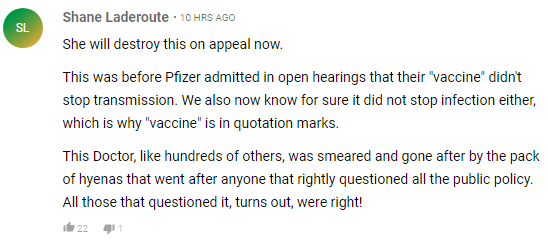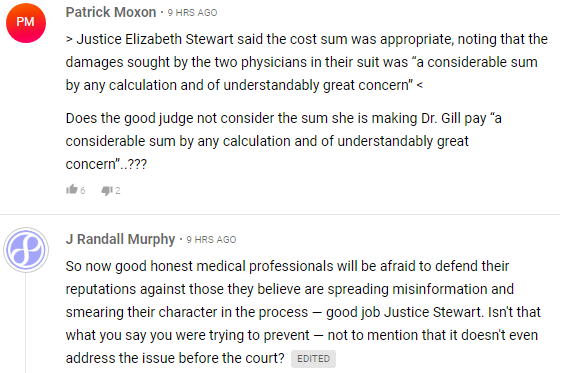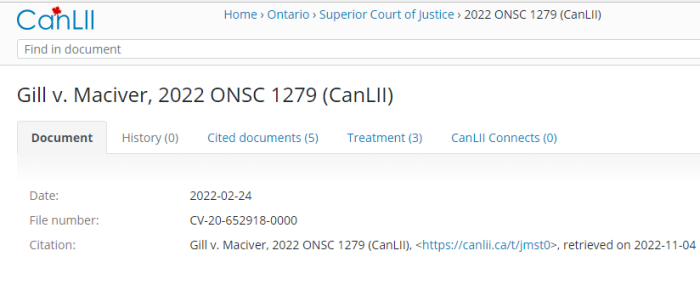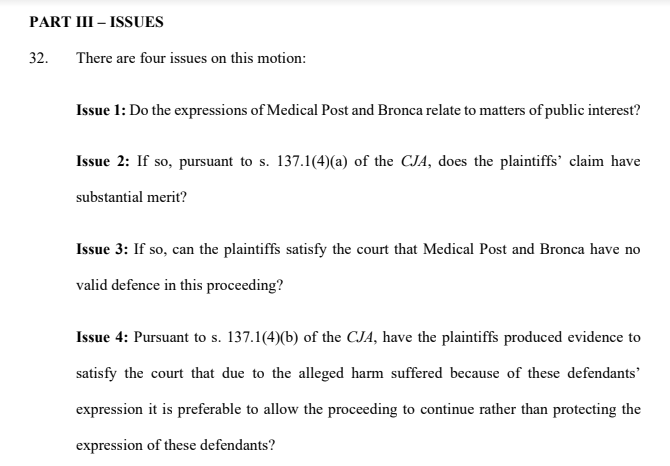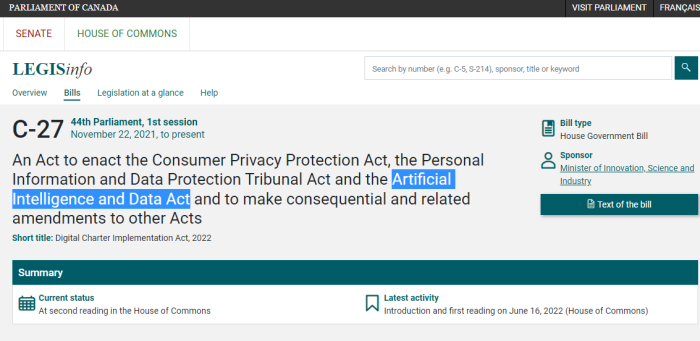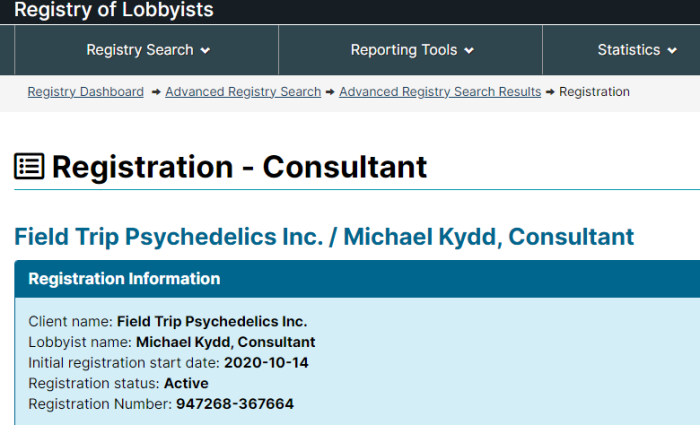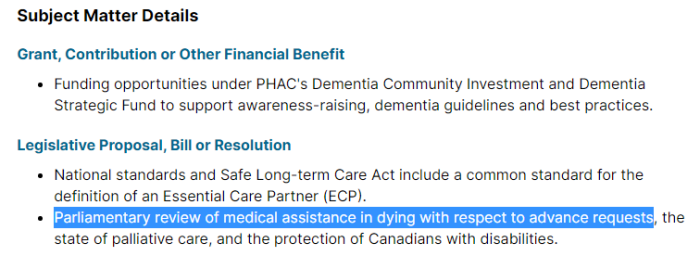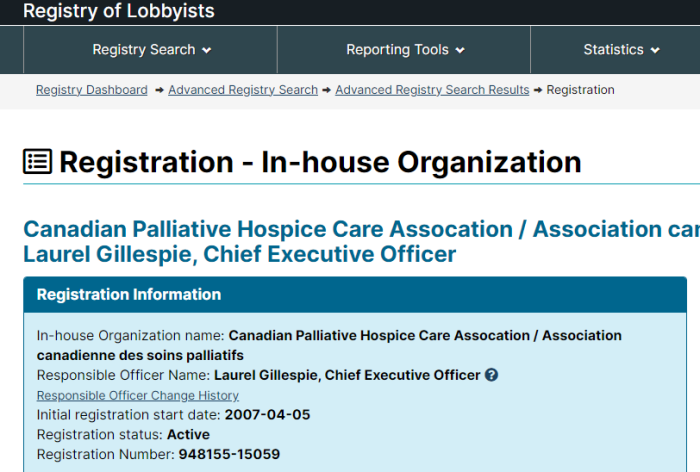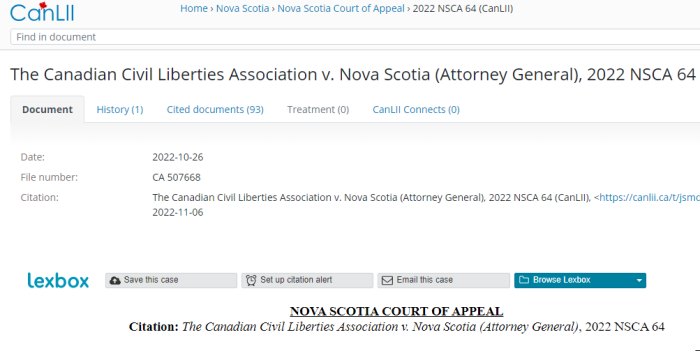
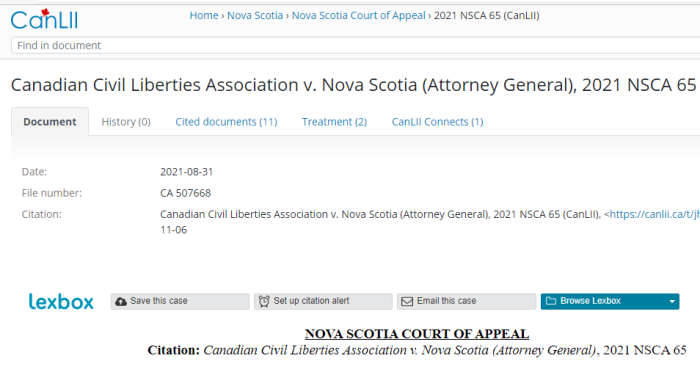
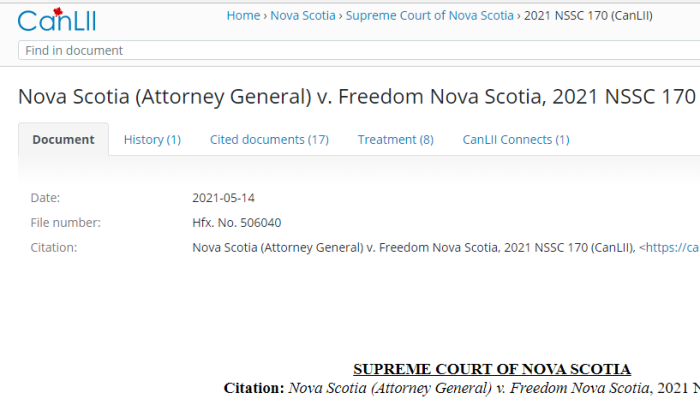
The Nova Scotia Court of Appeal ruled a week ago on a challenge to a May 2021 injunction. Previously, the Provincial Supreme Court ruled ex-parte that Robert Strang could effectively suspend freedom of assembly on an indefinite basis.
The Canadian Civil Liberties Association, CCLA, applied to intervene to appeal the matter. It was granted on August 31, 2021. Due to the complexity of the issues, and other delays, it took a year for the case to be heard.
While the issue of infringing on civil rights did come up in the decision, it wasn’t front and center. Instead, there were many procedural errors cited. Still, the trio did make many findings which can be used at a later date. It wasn’t a total loss.
Strang got (rightfully) rebuked for his overreaching power grab, but it could have been done in a much more forceful way.
Overall, it’s a “meh” kind of ruling.
Issues:
1. Should the Court hear an appeal of an ex parte order?
.
2. Should the Court entertain a moot appeal?
.
3. Did the judge err by:
a) Granting an injunction order without the applicants having advanced any common law cause of action, statutory authority, or other right to a remedy;
b) Applying the test for an interlocutory injunction to the applicants’ request for a permanent injunction;
c) Stating and applying the wrong test for a quia timet injunction;
d) Granting an Injunction Order against all Nova Scotians without requiring evidence that such a remedy was needed against all Nova Scotians;
e) Granting an injunction order without considering that the order infringed the Charter rights of all Nova Scotians and that this infringement may not be justified in circumstances;
f) Accepting the evidence of a named applicant as independent expert evidence, without compliance with Rule 55 or the common law requirements for independent expert evidence.
Between the 3 Justices, there was some dissent on a few issues, although they seemed to agree for the most part. The more important things they were all in agreement on:
- The Attorney General’s application should not have been ex parte;
- The Court should hear this moot appeal;
- Dr. Strang’s expert opinion was not admissible;
- The Nova Scotia Supreme Court had the jurisdiction to issue a quia timet injunction to enjoin apprehended breaches of the Public Health Order made pursuant to the Health Protection Act;
- The motion judge erred when he employed the test for an interlocutory injunction when he actually was asked for and did issue a permanent injunction;
- The motion judge erred by not considering the impact on Charter rights when considering if he should issue the requested injunctive relief;
- The motion judge erred by issuing injunctive relief that was far too broad.
There was dissent on the following:
- The AGNS failed in its duty to provide full disclosure of information in its possession on the ex parte application;
- The motion judge erred in law in finding the prerequisites for a permanent quia timet injunction had been made out;
- Dr. Strang’s opinion about the risk of outdoor transmission should not have been accepted because he lacked the necessary independence and impartiality as set out in White Burgess.
In contrast to a few other recent decisions, the NSCOA decided to hear the case in spite of it being moot. The issues were of such a public interest that it should go ahead. This differed significantl from other recent cases, in which there was no inclination to do so.
(Para 47) The COA disagreed that applying for an injunction without notice was appropriate. Unless: (a) it’s impossible to give notice; or (b) giving notice may cause the event, this type of procedure shouldn’t be attempted. The Government could have given notice, but simply found it more expedient not to.
(Para 54) The Government chose a method that was designed for temporary measures, but the open-ended nature of the Order sought was effectively permanent, or semi-permanent. There was no end date provided.
(Para 56-57) The Government tries to argue that it would have met the test for a permanent injunction with the information it had the time. Additionally, the Court found that the wrong test had been applied for in seeking a permanent — as opposed to temporary — injunction.
(Para 61-63) The proper quia timet test was used. This is a test used to get injunctions based “on the fear of” something happening. Problem is, this test seems to be almost entirely subjective, and open to abuse.
(Para 64-69) The question came up as to whether or not there was even a valid cause of action. The Court decided that the likelihood of these Orders being violated, combined with the fear of disease spreading, was justifiable in and of itself.
(Para 127-140) The Order applied not only to certain people wanting to attend gatherings, but to Nova Scotians as a whole. The Court also said that this was overreaching given the overstated likelihood of infection.
(Para 141-148) The Court took issue with the fact that the original Order was obtained ex-parte, and there wasn’t enough consideration given to the Charter violations that would likely result.
(Para 149-168) Robert Strang, the Medical Officer of Health, should not have been qualified as an “expert”. Given his position, there was an inherent conflict of interest. He gave evidence in support of submissions that would validate his own demands. As such, he wasn’t separate enough.
[169] The Province incorrectly applied for a permanent ex parte injunction, but argued the test for an interim injunction described in RJR. The Province should have sought an interlocutory injunction on notice to which the RJR test properly applied. The Charter rights engaged should have been considered in the balance of convenience step of the RJR test.
[170] The Province did not establish a basis for granting either an interlocutory or permanent injunction because it did not tender admissible evidence of outdoor transmission of COVID-19 on which a finding of “high probability” of serious or irreparable harm could be grounded. The Chief Medical Officer should not have been qualified as an expert. In any event, the Order granted should not have been indefinite as to time, place and person.
(Para 200-218) The issue of mootness came up. Since the Orders have been rescinded, was there an issue to even be tried? The NSCOA decided to limit its scope to questions of law, and not revisit the factual findings from the Lower Court.
(Para 220-247) Robert Strang’s role as expert witness was questioned, given his conflict of interest. The NSCOA acknowledged that sections 8, 20, 24, 32 and 37 give him the right to issue directives based on his opinions and beliefs.
(Para 248-280) The ruling went on at length as to whether the proper test had been applied for permanent injunction. This was important, as it related to the concerns of Charter breaches. The Judges agreed that the test hadn’t been met.
(Para 281-303) The Court of Appeals took issue with the fact that the injunction would apply to everyone in the Province, and was done without the means to challenge in the first place. It was an error of due process to not allow others to confront accusers. This wasn’t limited to a select group, either.
(Para 303-328) The Panel avoided the question — for the most part — about whether these Orders were violation of Charter rights. A full analysis apparently wasn’t required. Instead, there was more of an issue with the roughshod way this was done. In short, there were more procedural than substantive problems.
(Para 329-350) Is this “virus” transmissible, and was there proper disclosure? Here, the NSCOA seemed to avoid that, and simply stated that Strang was offering full disclosure with whatever available information he had. He was able to get the injunction without introducing actual evidence. The Court didn’t seem too bothered by that.
In a sense, this was academic, as there’s currently no Order in place. Still, there’s a ruling now, and the good parts may be useful later.
It was helpful to have a (somewhat) favourable ruling from Nova Scotia. However, the problems go much deeper than just the Charter, or some Officer of Health. To date, it doesn’t seem that any lawyer has brought this forward.
1908: International Public Health Office to be created
1926: International Sanitary Convention was ratified in Paris.
1946: WHO’s Constitution was signed, and it’s scary.
1951: International Sanitary Regulations adopted by Member States.
1969: International Health Regulations (1st Edition) replaced ISR. These are legally binding on all Member States.
2005: International Health Regulations 3rd Edition of IHR were ratified.
2005 Quarantine Act, Bill C-12
2004 creation of PHAC
Health Canada’s Real History
Although probably outside the scope here, it would be nice to see the Public Health Acts themselves challenged in Court. No one ever voted for this, but the W.H.O. is able to write our laws to include medical tyranny.
If laws are put in place that aren’t written in this country, shouldn’t that be grounds to have them challenged and struck down?
Also, it’d have been preferable to fully address the issue of civil rights violations. Freedom of assembly, especially when protesting Government overreach, is an important ability to have. Without it, there’s no open society.
The NSCOA acknowledged that the May 2021 Order violated Charter rights, but didn’t really dive into it. Instead, they seemed more content to focus on the many breaches of procedure that had taken place.
The panel also seemed to go out of their way to give Strang the benefit of the doubt. He took the rights of a million people away. He needs to be held to account, not given deference.
On the bright side: there are parts of this ruling which could be the basis for future actions at a later date, such as restricting the use of ex-parte injunctions. It wasn’t a complete loss. Another Judge might quote portions of this to come to favourable conclusions elsewhere.
Guess we’ll see what happens next.
(1) https://nslegislature.ca/legc/bills/59th_1st/1st_read/b026.htm
(2) https://www.canlii.org/en/ns/laws/stat/sns-2004-c-4/latest/sns-2004-c-4.html
(3) https://www.canlii.org/en/ns/nssc/doc/2021/2021nssc170/2021nssc170.html
(4) https://www.canlii.org/en/ns/nsca/doc/2021/2021nsca65/2021nsca65.html
(5) https://www.canlii.org/en/ns/nsca/doc/2021/2021nsca65/2021nsca65.html


